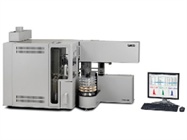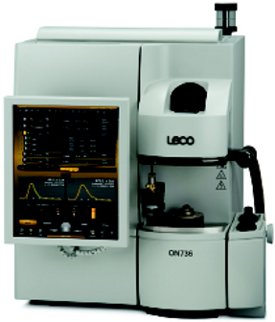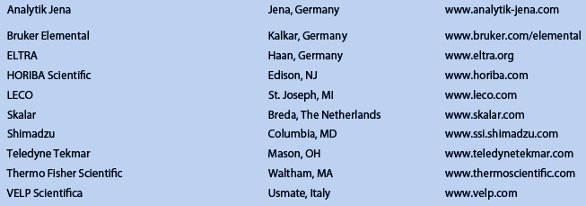Featured Article

Please see our Nitrogen Analyzer / Total Nitrogen Analyzer (TN Analyzer) section to find manufacturers that sell these products
Nitrogen is a common element, present in every living organism. It is vital to lifecycles and important in many industrial processes in its different forms. Organic nitrogen occurs in proteins, peptides, nucleic acids, urea, and many synthetic organic materials. Common forms of inorganic nitrogen are nitrate (NO3), nitrite (NO2), and ammonia (NH3).
Nitrogen analyzers are used in a wide range of industries, including chemicals manufacturing, pharmaceuticals, food, petrochemicals, agriculture, and environmental sciences. Nitrogen analysis has three major applications: environmental monitoring of water, soil, and effluent; protein determination in foodstuffs; and process and quality control for chemicals and materials (see Table 1).
Table 1 – Samples typically analyzed by nitrogen analyzers

Environmental monitoring
Nitrogen is a growth nutrient used in fertilizers. Ammonia is used for refrigeration and the production of nitrogen compounds and is often present in industrial wastewater. High nitrogen levels promote excess growth of plant matter in water. This causes eutrophication, a level of oxygen depletion deadly to aquatic organisms. For this reason, nitrogen levels are monitored in wastewater, surface water, groundwater, and soil.
High nitrogen levels are also dangerous to human health, so there are stringent safety standards for drinking water. The U.S. EPA’s maximum contaminant level for nitrate in drinking water is 10 mg/L.
Protein determination
Organic nitrogen is the basic element in amino acids, making it a primary component of protein. Organic nitrogen analysis is routinely used to determine protein content in food, beverages, plant matter, and animal foodstuffs.
Process and quality control
The levels of nitrogen and other elements, particularly oxygen and hydrogen, are a guide to the quality and properties of iron, steel, and other metals.
The G8 GALILEO ONH from Bruker Elemental (www.bruker.com/elemental) determines oxygen, nitrogen, and hydrogen in solid materials including iron; steel; nonferrous metals; alloys like Al, Cu, Ni, Co, Ti, and Zr, ores; ceramics; oxides; and nitrides.
Testing methods
Total Kjeldahl nitrogen (TKN) is the traditional method for determining organic and inorganic nitrogen. Acid digestion converts the organic nitrogen to ammonia, which is distilled and detected by colorimetric or titrimetric methods. TKN is inexpensive and accessible, but analysis can take hours. Furthermore, it requires safety measures due to chemical waste and its accuracy depends on the operator’s experience.
International regulatory bodies now support the safer and quicker Dumas method, which uses oxidation by high-temperature combustion for sample preparation. Detection is by chemiluminescence or thermal conductivity. The Dumas method involves no chemicals and analysis can be completed in minutes. It can be fully automated and is suitable for continuous operation in highthroughput laboratories.
Purchasing considerations for nitrogen analyzers
The fundamental considerations when choosing an analyzer will be the type of sample you are analyzing, whether you require multielement analysis, and whether the instrument complies with relevant regulatory guidelines. Other major factors are:
- Measuring range, detection limits, and accuracy
- Speed of analysis
- Automation
- Sample volume
- Software and reporting mechanisms
Sample matrix
Most nitrogen analyzers are designed to handle either solids or liquids, but some are more versatile. The TruMac N from LECO (www.leco.com) (Figure 1) measures nitrogen/protein in organic samples. It can handle heterogeneous, difficult-to-prepare, or low-level samples including soils, feeds, meats, pet foods, starches, slurries, and wastewater.

Figure 1 – The TruMac from
LECO measures nitrogen/protein in organic samples such as soils, feeds, slurries, and wastewater. An autoloader provides unattended analysis of up to 50 samples.
The Multi EA® 5000 from Analytik Jena (www.analytik-jena.com) is a single modular analyzer that can handle liquid, paste-like, solid, gaseous, and liquefied petroleum gas (LPG) samples. The multimatrix autosampler injects into a double furnace that can be changed from horizontal to vertical with no need to change connections when switching from solid to liquid samples.
Multielement analysis
Nitrogen analysis is frequently combined with other elemental analysis, typically carbon, oxygen, or hydrogen. Some analyzers are modular with add-ons for additional elemental analysis.
ELTRA analyzers (www.eltra.org) are available for single elements O, N, or H, or combined elements ON, OH, or ONH.
The TOC-L Series from Shimadzu (www.ssi.shimadzu.com) has the option of adding a total nitrogen (TN) analyzer to perform simultaneous TN and TOC (total organic carbon) measurements.
Regulatory compliance
Since nitrogen analysis covers a broad range of industries, check that your chosen analyzer complies with the relevant regulatory test methods for your industry.
The FP628 from LECO for nitrogen/protein analysis in organic samples complies with Association of Official Analytical Chemists (AOAC), American Association of Cereal Chemists (AACC), and American Society of Brewing Chemists (ASBC) methods and international ISO standards.
The Thermo Scientific iPRO 5000 Series TN/TS analyzer for petrochemicals (Thermo Fisher Scientific, www.thermoscientific.com) is compliant with ASTM D4629, ASTM D6069, ASTM D7184, ASTM D7183, ASTM D5453, ASTM D6667, EN 20846, EN 15486, and UOP 936.
Measuring range, detection limits, and accuracy
The measuring range, detection limits, and accuracy vary by sample size and may be quoted as ppm or ppb, weight per gram, or a percentage. For multielement analyzers, detection limits and accuracy vary for different elements.
The ON-900 and ONH-2000 from ELTRA use inert gas fusion to break down solid metals, alloys, and ceramics. Nitrogen is determined by thermal conductivity. For a 1-g sample, the low measuring range is 0.1 ppm–200 ppm with an accuracy of ±0.1 ppm. The high measuring range is 10 ppm–2% with an accuracy of ±2 ppm. Sensitivity is 0.01 ppm.
The EMGA-930 analyzer for inorganic materials (HORIBA Scientific, www.horiba.com) has a sensitivity of 0.001 ppm and accuracy of 0.02 ppm.
The Torch Combustion TOC/TN analyzer for water samples (Teledyne Tekmar, www.teledynetekmar.com) has a detection limit of 50 ppb and maximum measurable concentration of 2000 ppm.
Speed of analysis
The speed of nitrogen analysis depends on the method used, the sample size, and the heat of combustion. Most nitrogen analyzers take 3–4 min per analysis. Loading procedures and postanalysis cleaning will impact the throughput.
Instruments that stand out as having particularly fast analysis times are the HORIBA EMGA-830, quoting 40 sec from gas extraction to sample display, and the G8 GALILEO, with an analysis time of 50 sec.
Automation
Many automation features are available, including autoloading and cleaning for continuous use and autocalibration for walkaway operation. The NDA 701 Dumas nitrogen analyzer from VELP Scientifica (www.velp.com) can be loaded with up to four disks with 30 positions each. The same autosampler is suitable for liquid, solid, and semisolid samples.
HORIBA’s EMGA-930 determines O/N/H in inorganic materials. The crucibles are loaded automatically, and the autocleaner brushes the electrodes after each measurement. A vacuum cleaner removes dust to prevent contamination.
The Teledyne Tekmar Dohrmann TN analyzer for water analysis has an automated calibration and “intellidilution” feature that automatically detects and dilutes samples that have exceeded the selected calibration range.
Sample size
Samples are measured by weight for solids and volume for liquids and gases. The standard solid sample size is 1 g, but can range from 1 mg to 3 g.
The TruSpec Micro from LECO analyzes solid or liquid microsamples of 1–10 mg. For larger samples, the challenge is to achieve a thorough combustion. The TruMac Series Macro Determinator from LECO has a horizontal ceramic furnace with a pure oxygen environment that can reach 1450 °C to analyze 3-g samples.
The maximum sample volumes for Analytik Jena’s Multi EA 5000 are 100 μL for liquids, 500 μL for water, 100 mL for gases, 100 mg for solids, and 50 μL for LPG.
Software and reporting mechanisms
Most nitrogen analyzers include software to record and analyze the results. Consider the usability of the software and whether it is compatible with your LIMS.

Figure 2 –The ON736 analyzer from
LECO measures oxygen/nitrogen in inorganic materials, ferrous and nonferrous alloys, and refractory materials. It is controlled via a touchscreen display.
HTAccess™ software for the Formacs (Skalar, www.skalar.com) includes templates for multipoint regression, automatic exclusion of results, and recalculation. It also includes QC protocols, including password protection and audit trails.
LECO ON736 analyzers feature Cornerstone® software operated by a touchscreen that can be mounted on a boom, improving ergonomics and saving bench space (Figure 2). The software includes real-time ambient monitors, with fully animated system diagrams.
Other purchasing considerations
When choosing an analyzer, check the cost per analysis in terms of reagents and reusables. Consider also the routine maintenance requirements, cost of spare parts, and manufacturers’ guarantees.
Table 2 – Manufacturers and suppliers of nitrogen analyzers

Table 2 is a list of manufacturers of nitrogen analyzers.
Katriona Scoffin, B.Sc., is a freelance science writer; e-mail: [email protected]
Please see our Nitrogen Analyzer / Total Nitrogen Analyzer (TN Analyzer) section to find manufacturers that sell these products